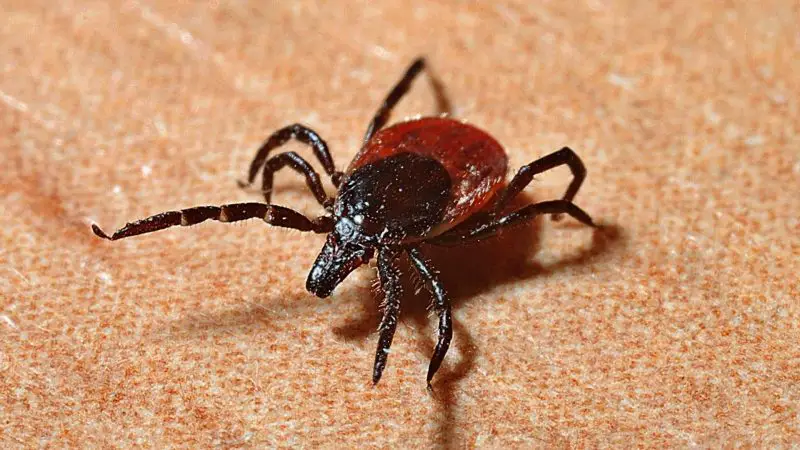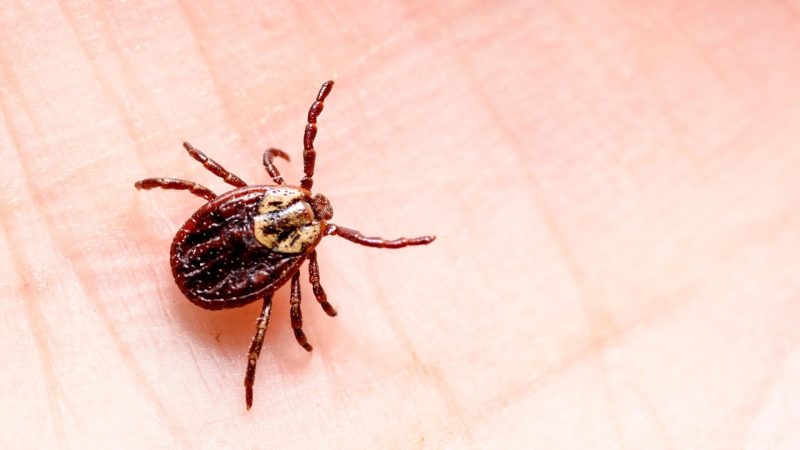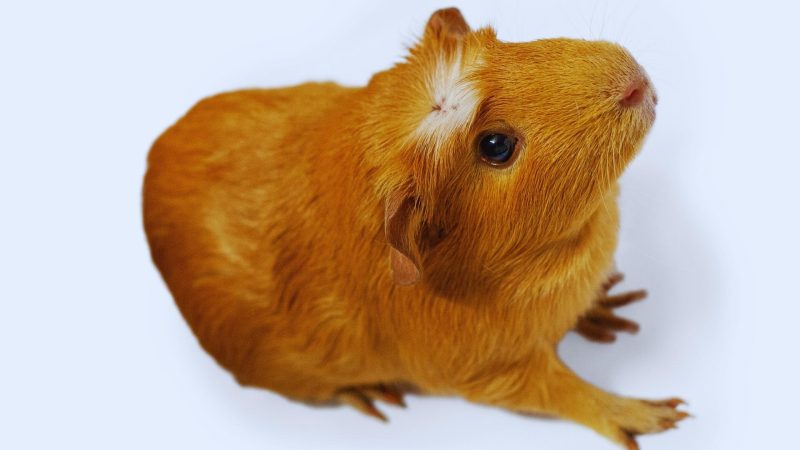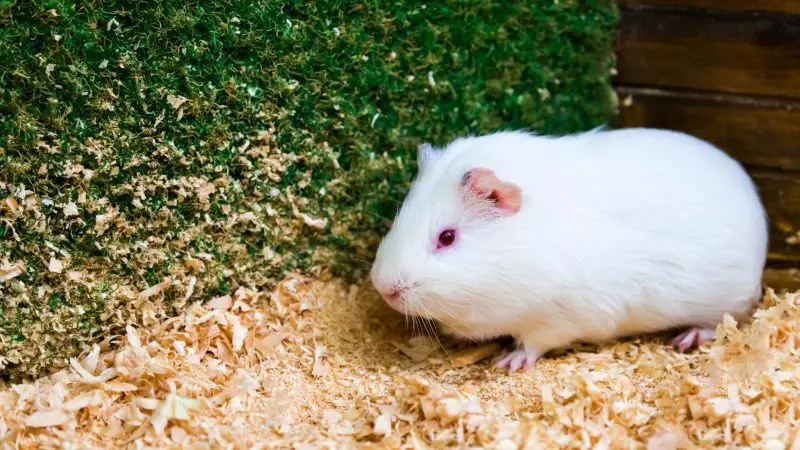Mites are tiny parasites that can cause a lot of problems. These insects are so small that it is pretty much impossible to spot them with a naked eye.
Can guinea pigs get mites? Guinea pigs can get mites and they can be infested with these creatures for years before you find that out. Usually, there is a small number of fur mites that can continuously live on the guinea pig. They co-exist without causing any troubles. But the problems start when the number of mites drastically increases. It can happen for various reasons.
Not keeping the guinea pig in a clean environment and poor grooming can be just one of the causes that they are infested by mites. Decreased immunity in guinea pigs can also become a precondition for the intensive reproduction of mites. Continue reading to learn more about it.
Table of Content
What Are Mites?

Mites are tiny external parasites of the arachnid family. Mites do not irritate guinea pigs in large quantities. However, if the number of mites rises, they can cause considerable injury to your guinea pig. The following factors increase your guinea pig’s chance of mite infestation:
- Living in a filthy or overcrowded environment.
- Having serious health issues.
- Stress weakens the immune system.
- Because of being overweight or aged, you may find it difficult to groom them.
Mites are invisible to the naked eye. So, regardless of how they appear, you’ll have trouble finding them on your guinea pig. The simplest way to tell if your pig has an infestation is to look for symptoms.
What Mites Can Infest Your Guinea Pig?

Unfortunately, mites can infect all types of guinea pigs of any age and sex. But the symptoms do depend on what kind of mite decided to attack your beloved pet.
There are two main types of guinea pig fur mites:
1. Chirodiscoides Caviae (Static Mites)
The Chirodiscoides caviae mites are not that dangerous. If infected by these insects, your guinea pig might not even show any symptoms. They will be simply running up and down its fur.
In the worst-case scenario, these symptoms will still be mild, and they can’t threaten the life of the cavy. Your guinea pig might not even be itchy as it also depends on the individual sensitivity of the animal.
2. Trixacarus Caviae
The sarcoptic mange (a skin disease caused by “Trixacarus caviae mite”) can be dangerous and even lead to the guinea pig’s death. This happens in most severe cases.
Your pet will start itching badly. The guinea pig can even cause a self-trauma or go into seizures because of how extremely bothering this itching is. These insects burrow under the animal’s skin and can even lay their eggs there.
What Are the Symptoms of Mites Infestations?

The following are the symptoms of mites infestations that you need to know:
- For you, as the owner, it will be quite easy to spot the symptoms of infestation.
- The guinea pig might start losing hair in the area where the mite is burrowed.
- The parts of the skin that have been affected will thicken. Sometimes even form a crust and become yellow.
- Your guinea pig can become depressed, lose sleep, lose weight and act unfriendly.
- Because of the intense scratching, red sores can be found. Moreover, a secondary bacterial infection can emerge, because of the open sores and the decreased immunity.
- If you accidentally touch the infested areas, then the chances are high that your guinea pig will start crying in pain.
Bear in mind, that mites have to be treated. If such a condition persists for a long period of time, then the poor guinea pig can die. Especially, if infected by the sarcoptic mange mites.
Firstly, these tiny creatures cause a lot of pain as soon as they burrow into the skin of your animal. The guinea pig will not only start scratching the spot it will also bite itself.
The poor guinea pig can die because of dehydration and hunger. He is just in too much pain to drink and/or eat. That is exactly why the infected guinea pigs can start losing weight fast.
The chances that the mites will leave the host on their own are minuscule. Moreover, even if there is no animal on which the mites can stay, they will still be able to live for at least three weeks. The eggs that the mites have laid can survive on their own and for even longer periods of time.
What Are the Causes of Mite Infestations in Guinea Pigs?
As we have already mentioned above, there is always a certain number of mites that peacefully live on your guinea pig. But it feels like these tiny creatures are always waiting for the right time to attack, as they start intensely reproducing once the immunity of the guinea pig decreases. That can happen during or after an illness, for example.
Moreover, young guinea pigs are in the risk zone, as their immunity is not fully formed yet. Pregnant guinea pigs and the cavies under constant stress can also suffer from decreased immunity.
There is also another way in which your pet can get more mites. Contacting infected guinea pigs, for example, might become a problem. A dirty environment is a perfect place for tiny insects to start reproducing. So if you don’t clean the cage often enough, it might become the reason why your guinea pig gets mites. Grooming the little guy is also a must.
Guinea pigs can get infected if they contact contaminated objects. It can be literally anything. In this sense, hay can be extremely dangerous.
Should You Be Concerned About Mites Affecting Your Family?
Because guinea pig mites dislike living on humans, most individuals who share a home with a mite-infected guinea pig do not become infected. However, Trixacarus caviae mites are communicable to humans. So if someone in your household is allergic to mites, coming into touch with an infected guinea pig may cause mild and probably transient dermatitis. Individuals who live with a mite-infected guinea pig and have skin issues should consult their doctors.
Why Diagnosing Mites Is Not Always That Simple?
Diagnosing mites can sometimes be a little complicated. That is exactly why it is always better to take your guinea pig to the vet before taking any measures.
The trick here is that the symptoms of mites’ infestation are practically the same as those of various parasitic skin illnesses such as ringworm or fungi. Certainly, these conditions can be dangerous as well, but the treatments will be different. That’s why it is important to find out with 100% certainly what kind of disorder your dear guinea pig has.
The vet would have to perform a few tests. They will surely examine the fur and skin of your pet. But the truth is that sometimes even the most experienced specialists can’t know for sure if this case is about fungi or mites without further tests. So the vet would have to take a skin scraping to examine it under the microscope. Only after that, they will have definite answers, and you can finally begin the treatment.
However, at times there might not be enough mites seen in the scraping. That does not necessarily mean that your guinea pig is not infested. The vet can perform the fungal culture of your animal’s hair to find out what exact condition we are dealing with.
How Are Mite Infestations Treated?
To treat mite infestation, you can do the following actions:
- In the most severe cases, your vet might suggest hospitalization. This will happen if your guinea pig is too weak to recover on its own. Unfortunately, there are no specific kinds of medications that your vet can prescribe. The doctor might recommend using some drugs designed for dogs or cats. These medications are safe for guinea pigs, but you can’t use them on your own. Your vet has to be guiding the whole process to make sure that everything is alright.
- The veterinarian can recommend some options that you can use at home. They might include sprays, pest exterminators, or powders. Follow the instructions carefully, and everything will be fine.
- If you bring your pet back from the vet and put it straight into its cage without cleaning it, then the chances are high that your guinea pig will get infested once again. So don’t forget to clean the cage thoroughly, change the hay and bedding. Moreover, cleaning the carpets in the house can be a great idea as well.
- There are a few things that you can’t use on your guinea pigs under any circumstances. Permethrin spot-on can be dangerous for the health of your beloved pet. As well as different mite collars made for pets.
- Make sure to keep its environment and the animal itself as clean as possible. You can also buy an anti-mange shampoo and use it monthly (sometimes even less often). Using such shampoo is a great preventative measure and an incredibly effective one.
How Do You Prevent Guinea Pig Mites?

It is difficult to get rid of mites on your guinea pig. There are, however, certain actions you may take to keep infestations at bay.
- Check their health. Examine their health on a frequent basis. Check for symptoms of parasites using a fine-tooth comb and a gentle parting of the hair.
- Cages and bedding should be kept clean. Daily spot checks should be performed, and filthy or damp bedding should be removed. Wash and replace their bedding once a week, and thoroughly clean their bedding once a month.
- Provide a well-balanced meal for your guinea pigs. To be healthy, guinea pigs require a well-balanced diet. Make sure your dogs are getting high-quality pellets, enough hay, and a variety of veggies and fruits. You’ll need to add vitamin C to their diet as well.
- Maintain a cheerful environment for your cavies. It’s critical that your guinea pigs be relaxed and happy. It’s important to have the correct size cage with enough room to run and toys to keep them entertained. If your guinea pig is alone, it is more likely to feel anxious, so make sure they have a companion.
- Always check for mites before introducing a new guinea pig. Mites can be passed from each guinea pig. Before bringing a new guinea pig to a cage, make sure there are no symptoms of parasites.
Summary
Unfortunately, your little friends really can get mites. Moreover, this kind of infestation can endanger the guinea pig’s life. You, as a loving owner, have to make sure to do everything possible to prevent your guinea pig from getting mites. If you think that your dear pet may be infested, pay a visit to the vet as fast as you can. Your guinea pig will undoubtedly appreciate it later.
